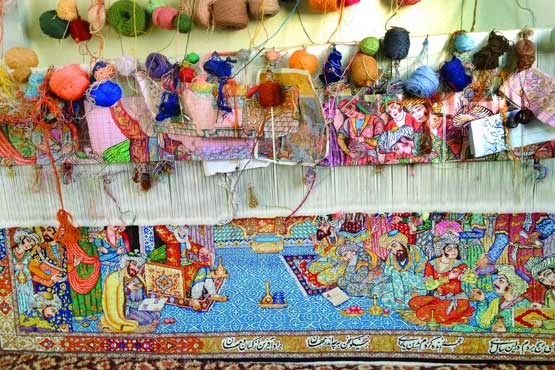Exploring the Unique Beauty of Baluch Carpets
Baluch carpets, also known as Baluchi or Beluchi carpets, are renowned for their intricate designs and rich cultural heritage. These handmade carpets originate from the Baluch nomads, an ethnic group residing near the border regions of Iran, Pakistan, and Afghanistan. Their craftsmanship reflects the nomadic lifestyle and the diverse influences from these areas.
Origins and Distribution
Baluch nomads, primarily found in Pakistan, Iran, and Afghanistan, have a rich tradition of carpet weaving. About 70% of the Baluch population resides in Pakistan, divided into two main groups: the Sulaimani and Makrani. Smaller communities of Baluch people can also be found in Bahrain and the Punjab province of India. The nomadic lifestyle of the Baluch people has significantly influenced their weaving techniques and designs, resulting in carpets that are not only functional but also artistically significant.
Key Regions of Production
Baluch carpets are typically sold in prominent cities near their regions of origin. In Iran, the city of Mashhad is a central hub for these carpets, known as Mashhad-Baluch rugs. Similarly, in Afghanistan, the city of Herat is renowned for its Herat-Baluch carpets. These cities serve as vital marketplaces where the intricate works of Baluch weavers reach a broader audience, blending traditional craftsmanship with contemporary market demands.
Distinctive Characteristics
Baluch carpets are distinguished by several unique features:
- Size and Patterns: These carpets are often small in size, making them ideal for personal use, such as prayer rugs. The patterns are lively and intricate, reflecting the vibrant cultural heritage of the Baluch people.
- Color Palette: The dominant colors in Baluch carpets are rich reds, deep browns, and dark blues. These hues are typically derived from natural dyes, giving the carpets a timeless and organic appeal.
- Materials: Traditional Baluch carpets are woven with a warp made of wool or a mixture of wool and goat hair. Newer carpets often incorporate cotton warps, providing additional durability and flexibility.
- Designs: The designs on Baluch carpets are often geometric and symbolic, featuring motifs that represent various aspects of the nomadic lifestyle and natural surroundings. Common designs include octagons, diamonds, and intricate borders.
Cultural Significance
The art of Baluch carpet weaving is more than just a craft; it is a cultural expression that has been passed down through generations. Each carpet tells a story, capturing the essence of the Baluch people’s history, beliefs, and way of life. The carpets serve various purposes, from practical use as floor coverings and prayer rugs to decorative items that add a touch of heritage to modern homes.
Market and Appreciation
Baluch carpets are highly valued by collectors and enthusiasts for their unique designs and craftsmanship. The combination of traditional techniques and distinctive patterns makes these carpets sought after in the global market. Whether used as a functional piece in a home or as a collectible item, Baluch carpets offer a glimpse into the rich cultural tapestry of the Baluch people.
Baluch carpets are more than just decorative pieces; they are woven narratives of the Baluch nomads’ history and culture. With their vibrant patterns, rich colors, and intricate designs, these carpets embody the spirit and resilience of the Baluch people. As you explore the world of Baluch carpets, you will discover the artistry and heritage that make each piece a unique work of art. Whether you are a seasoned collector or a newcomer to the world of handmade rugs, the beauty and cultural significance of Baluch carpets will undoubtedly captivate and inspire you.

